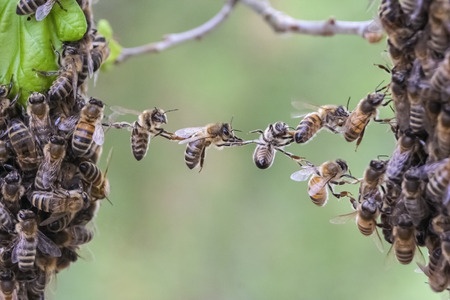I Can’t Bee-lieve It

November 3, 2016
The rapidly decreasing bee population has captured worldwide attention due to the drop of one certain bee species.
Although the bee as an insect class has not been added in the Endangered Species list, on Sept. 30, the US Fish and Wildlife Service determined that seven species of the Hawaiian yellow-faced bee were to be protected under the Endangered Species Act, which now contains 41,415 endangered plants and animals. These are Hawaii’s only native bees and the first of any in the United States to be added to the endangered list, thanks to a conservation group Xerces Society, who advocated for it.
What are we without bees? A world without bees would be devastating for our food production. Over one-third of our food supply relies on the pollination services that bees give to us. There is a direct connection between bee pollination and the ability to provide food. Without their pollination, there will be death — the death of a large number of crops, such as cranberries, melons and blueberries.
The value of the pollination provided by bees is estimated at about 265 billion euros yearly. In the United States alone, bee pollination is valued at approximately 16 billion dollars, according to a Cornell University study. The alternative — hand- pollination — is labor-intensive, fairly slow and really expensive. It pays to protect our bees.
“Honey, we have a bee problem.” Although the bee population may not be officially “endangered,” the honey farming business has been suffering. The beekeeping business has become expensive and time consuming as beekeepers must manage and replace the colonies that die off. To replenish stock, they must either split one healthy colony into two or breed their own queens to replace dead ones.
This process is expensive and takes time and effort. Three pounds of bees and a queen cost about $100 for a season, according to USDA Honey Production Surveys. Beekeepers have recently faced unsustainable economic losses; these losses get carried on to the consumer. It’s evident in honey prices, which have roughly doubled since 2006, according to the National Honey Board.
Keeping our bees alive is essential to our existence. Some solutions are getting rid of bee-harming pesticides and promoting ecological bee farming. Insecticides called neonicotinoids, which are widely used on crops such as corn and canola, recently have been discovered to be linked to the declines of the wild bee population. Because these “neonics” are use on approximately 100 million acres of American farmland, according to a 2012 USDA survey, it is hard for a majority of the bee population to not come in contact with these insecticides. But because it is very difficult to survey wild bee populations, it is hard to understand the true magnitude of the situation.
Ecological bee farming is less harmful to bees and a more expensive solution. Honey production does risk slowing, but in order to keep bee population steady, it may be necessary to make the change.
The misunderstanding that all bees are considered an endangered species is mostly due to the people who do not look into the complete story and just click “share.” Although the bee population isn’t all endangered, the world’s population and food producers must act to keep the bees safe.

